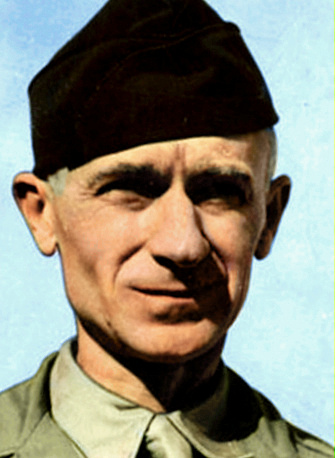Ferguson: Peace begins at home
By Mrs. Walter Ferguson
…
Players want to look attractive without being ‘overdressed’
By Maxine Garrison
…
Service wife is unwanted patron
By Ruth Millett
…
By Chester L. Smith, Press sports editor
…

By Ernie Pyle
IN THE WESTERN PACIFIC (delayed) – The first time you see a plane land on a carrier you almost die. At the end of the first day my muscles were sore just from being all tensed up while watching the planes come in.
It is all so fast, timing is so split-second, space is so small – well, somebody said that carrier pilots were the best in the world, and they must be or there wouldn’t be any of them left alive.
Planes don’t approach a carrier as they would on land – from way back and in a long glide. Instead, they almost seem to be sneaking up as if to surprise it. They’re in such an awkward position and flying at such a crazy angle you don’t see how they can ever land on anything.
But it’s been worked out by years of experience, and it’s the best way. Everything is straightened out in the last few seconds of flying. That is – if it works.
Anything can happen in those last few seconds. Once in a great while the plane loses its speed and spins into the water just behind the ship. And planes have been known to ram right into the stern of the ship,
The air currents are always bad. The ship’s “island” distorts the currents, and makes the air rough. Even the wake of the ship – the waters churned up by the propellers – have an effect on the air through which the planes must pass.
If half a dozen planes come in successively without one getting a “wave off” from the signalman, you’re doing pretty well. For landing on the deck of a small carrier in a rough sea is just about like landing on half a block of Main Street while a combined hurricane and earthquake is going on.
Few are perfect
You would call it a perfect landing if a plane came in and hit on both wheels at the same time, in the center of the deck headed straight forward, and caught about the third one of the cables stretched across the deck.
But very few of them are perfect. They come in a thousand different ways. If their approach is too bad, the signalman waves them around again.
They’ll come in too close to the edge of the deck, and sometimes go right on over the catwalk. They’ll come in so high they’ll miss all the arresting gear and slam into the high cables stretched across mid-decks, called “the barrier.”
Some do somersaults
Sometimes they do a somersault over the barrier, and land on their backs. Sometimes they bounce all around and hit the “island.” Sometimes they bounce 50 feet in the air and still get down all right. Sometimes they catch fire.
During the Tokyo strike, one of the big carriers running near us lost three planes in 10 minutes. One was shot up and had to “ditch” in the water alongside the ship.
The next one slammed into the “island,” and was so wrecked they just heaved the wreckage over the side. The next one to come in crashed the “barrier” and burned up.
And on the other hand. you’ll land planes for weeks without a bad crackup. We wrecked three planes our first three days out in crashes – and not a single one after that.
The first time I watched our boys land. They were pretty bad. They hadn’t flown for about two weeks, and were a little rusty.
Carrier stance
As I was watching the first flight come in one by one, my roommate, Lt. Cmdr. Al Masters, came up behind me and said: “Well, I see you’ve got the carrier stance already. I noticed you leaning way over to help pull them around into position.”
When all the planes were back, I walked over to Cmdr. Al Gurney, the air officer, and said “If I’m going to watch this for the whole trip, you’ll have to provide me with some heart-failure medicine.”
And he replied: “Well, think of me. I had to watch 2,000 of them. It’ll drive you nuts.”
The previous skipper of this ship finally got so he refused to watch when the planes were coming in. He just stood on the bridge and kept looking forward.
But as the trip wore on the boys improved and my own nerves hardened, and between us we managed to get all our planes down for the rest of the trip without a single casualty either to them or to me.
Small cities give larger majorities
By George Gallup, Director, American Institute of Public Opinion
…
Negotiators fail to break deadlock
…
Building materials, electricity, coal and gas can be withheld
…